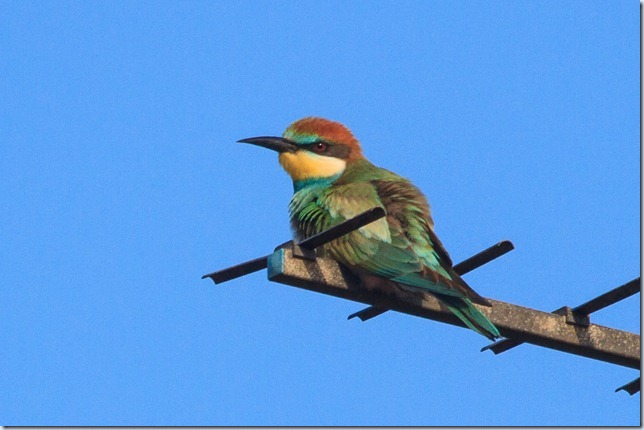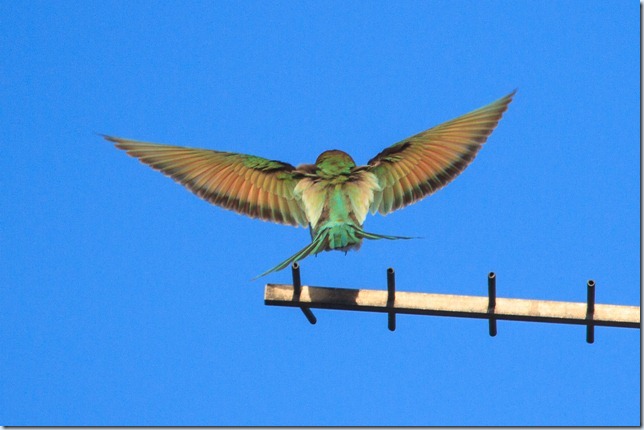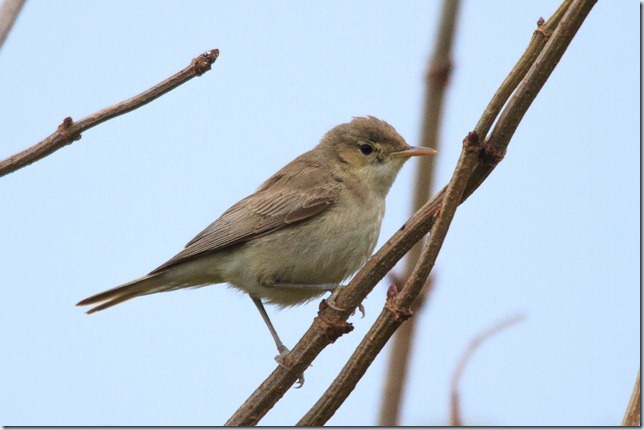So, after bagging the Olivaceous Warbler and getting the photos I wanted, Mick and I headed back west (going in any other direction from Fife Ness is going to end in tears…) to take a look at Largo Bay. This place has an excellent reputation for giving great views of seaduck, divers and grebes, and although it’s still early in the season we did OK: about 20 odd Velvet and a few Common Scoter, some of the former much closer than you ever see down south; a handful of Long-tailed Ducks in with the Eider; one or two Slavonian Grebes and Red-throated Divers; and a few common auks. We couldn’t find the reported Surf Scoter, but not to worry – I’d already seen enough to earmark the site for a future midwinter or early spring visit, it would be fantastic on a cold still blue-sky day!
After lunch, I made a start on the long drive south, but had only just got across the bridge when Mick texted local news of a Red-rumped Swallow at Blackness. Eventually, I found the right spot and got a series of very brief and somewhat distant views of the bird feeding low over a wood, where it presumably went to roost. Certainly no pics of this – for a while, views were bordering on untickable for me, though the bird had showed much better earlier on.
Overnight accommodation was bagged for the princely sum of £7 at Berwick YHA – a newly refurbished, clean and comfortable spot. And they also gave me an excellent tip for dinner in the Queen’s Head… superb meal, and a couple of well-deserved tasty local pints.
After an early night, I was up and out early, heading optimistically down the deserted A1 towards the reported Lesser Kestrel at Marsden. Lesser Kestrel in the UK is a bit of a sore point for me, given that I missed the Suffolk bird by about two minutes at dusk, having twitched from Dungeness the moment the news came out. The fact that all my mates saw it doesn’t help, either… Unfortunately the big grip-back wasn’t to be, with no sign in the first few hours of the day. I revisited Trow Quarry just down the road, reliving the Eastern Crowned Warbler experience from a few years back, but it was almost birdless this time.
Happier news soon came on the pager, though, in the form of the Bee-eater just down the road in Seaburn. This is probably up there with the most bizarre birds I’ve seen, as a stunning Mediterranean species flying around a residential area trying to catch wasps on a pretty chilly day in November! I don’t rate its survival chances if it hangs around much longer, but for the moment it seems to be doing OK and perched up to give nice views. The colours are just awesome – real ‘explosion in a paint factory’ stuff…
It was never quite close enough for killer shots with my lens, always a bit high, and flight shots were even harder to come by in the time I was there. These two still give you the idea, though – Bee-eaters are no less stunning in the air!






























